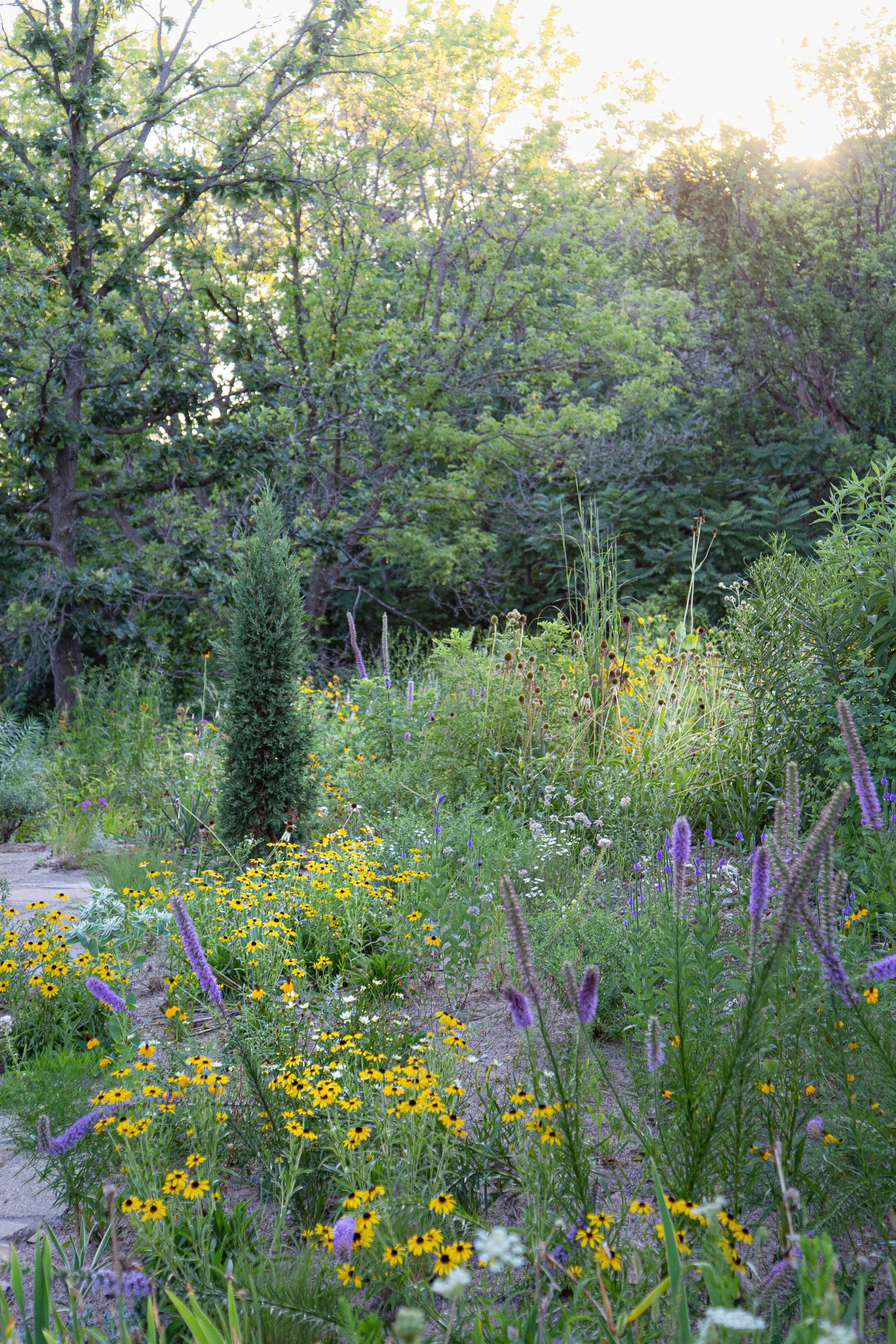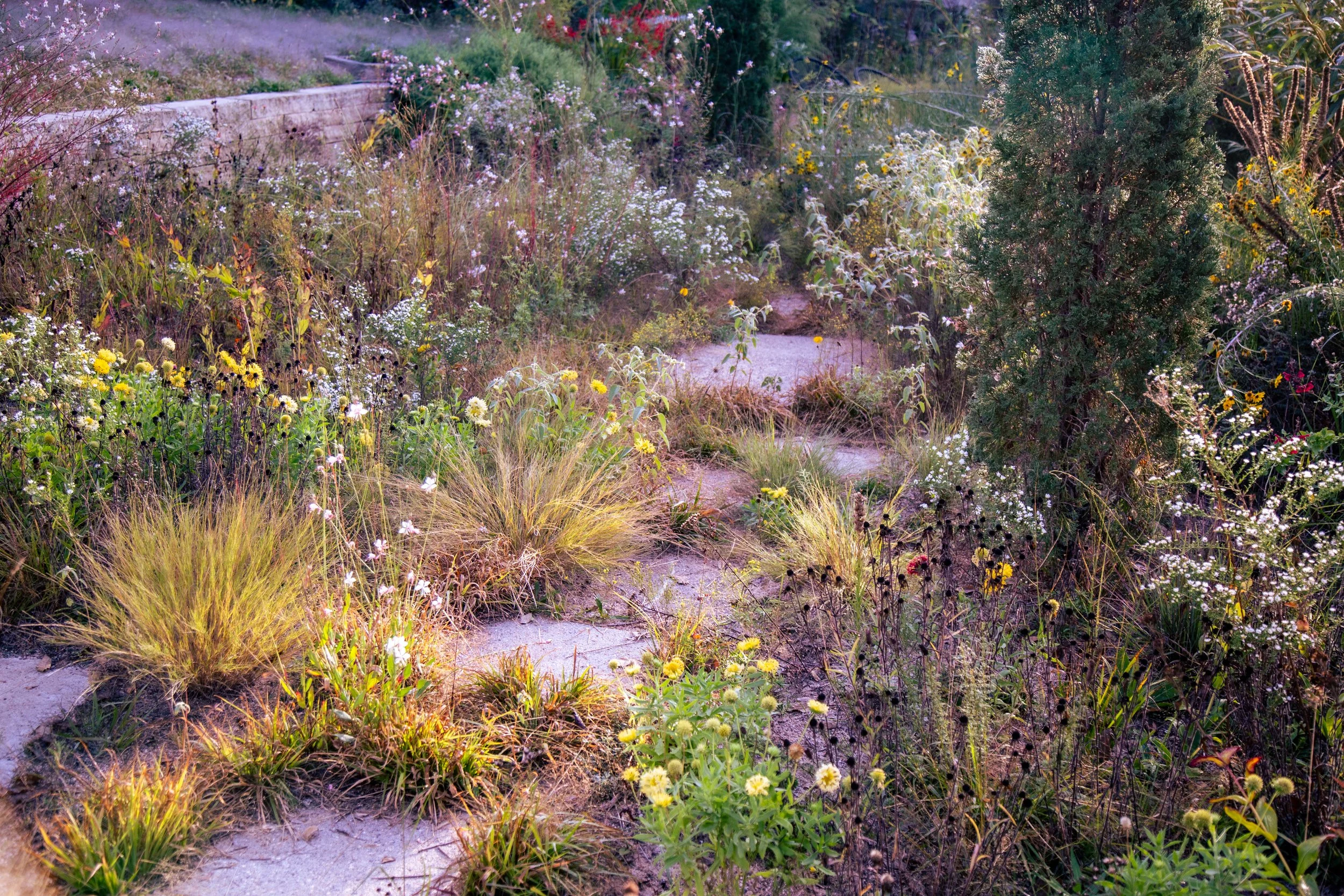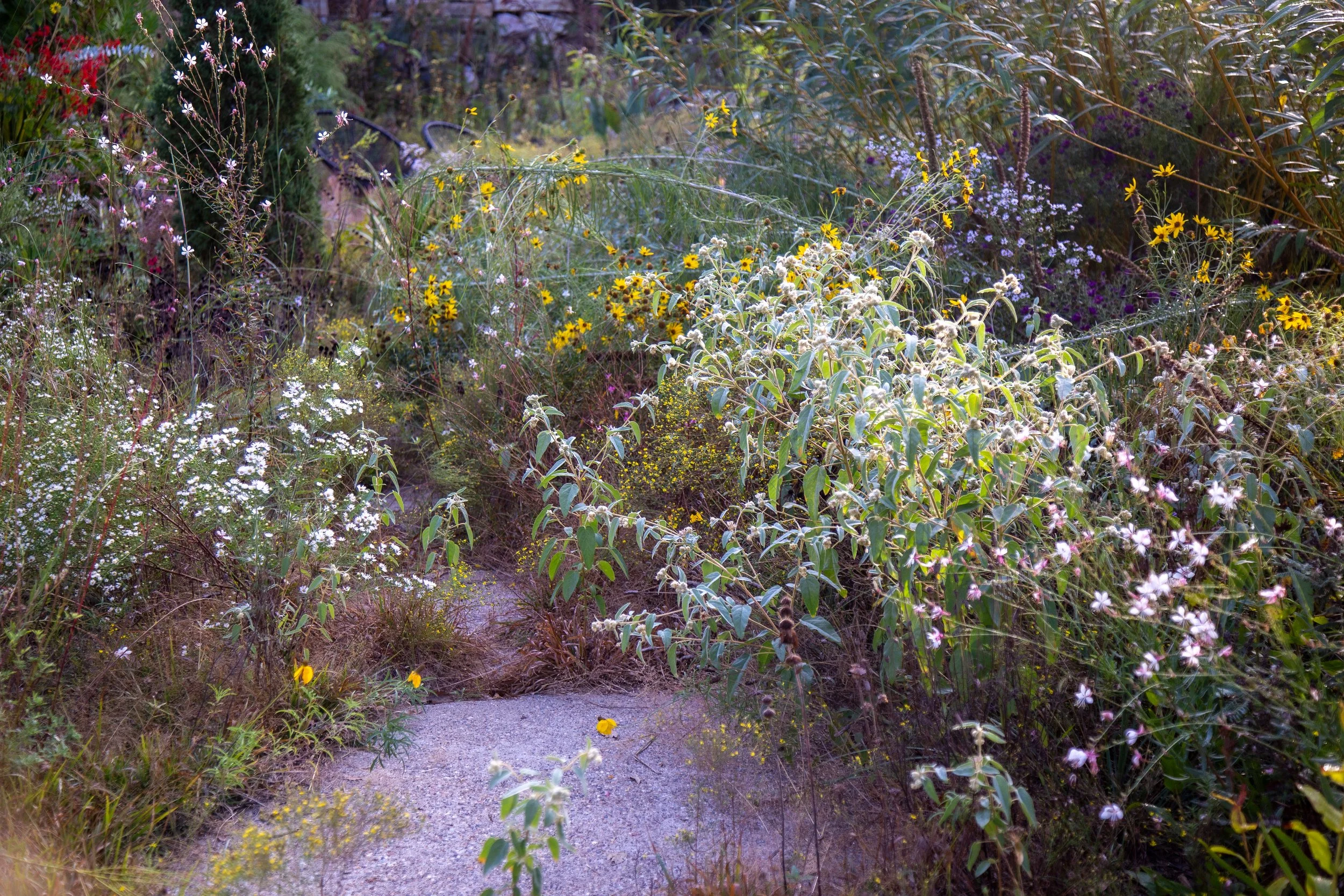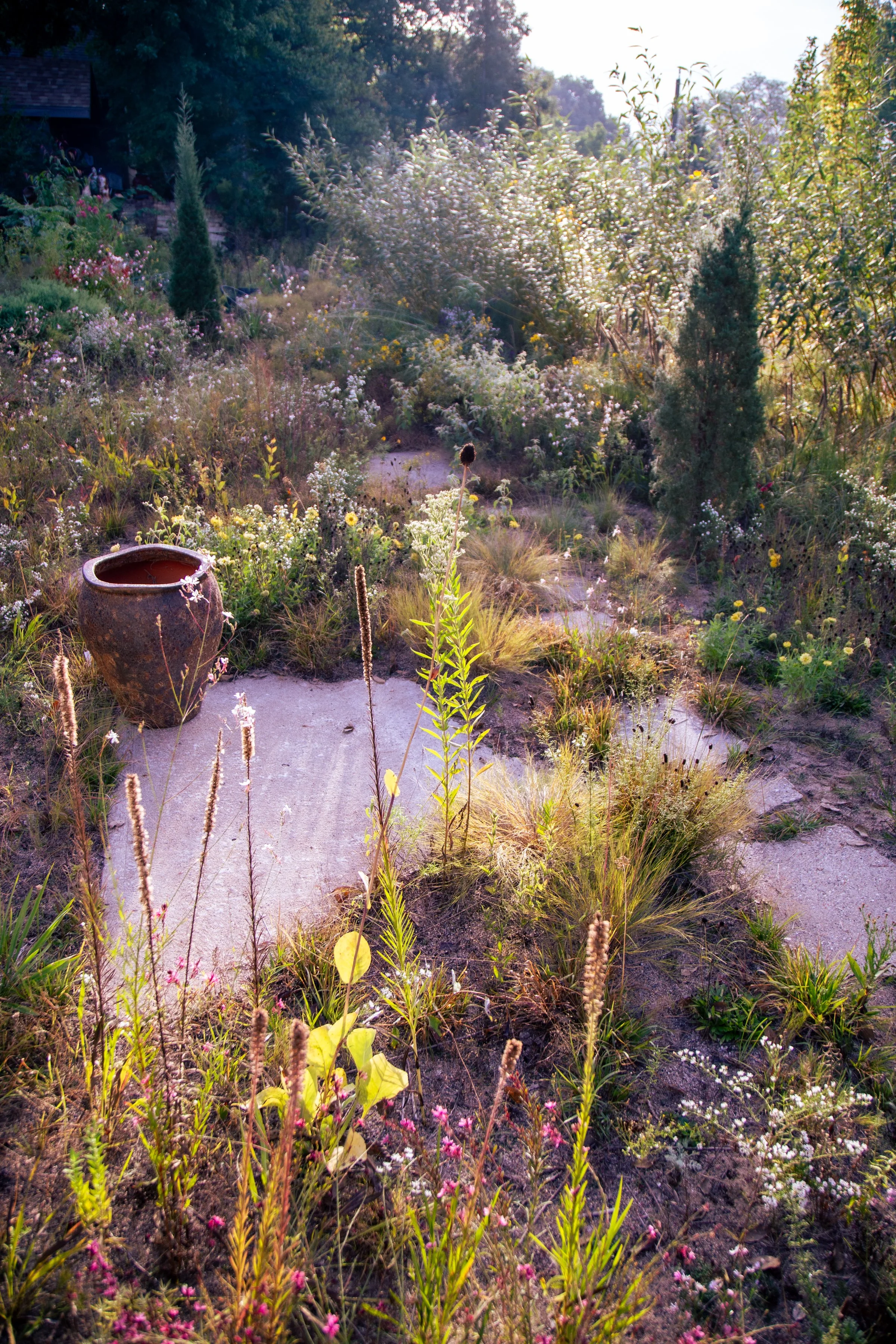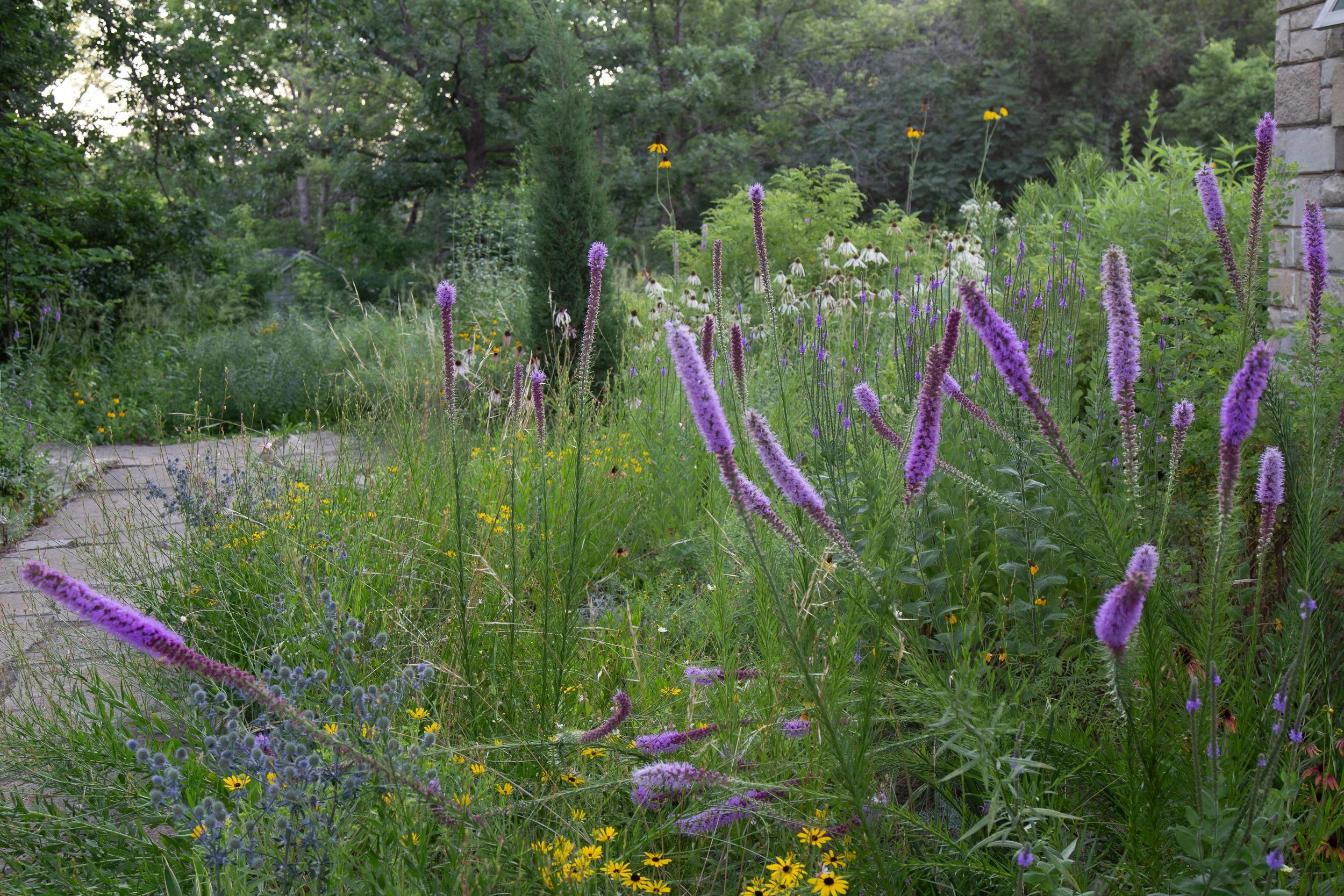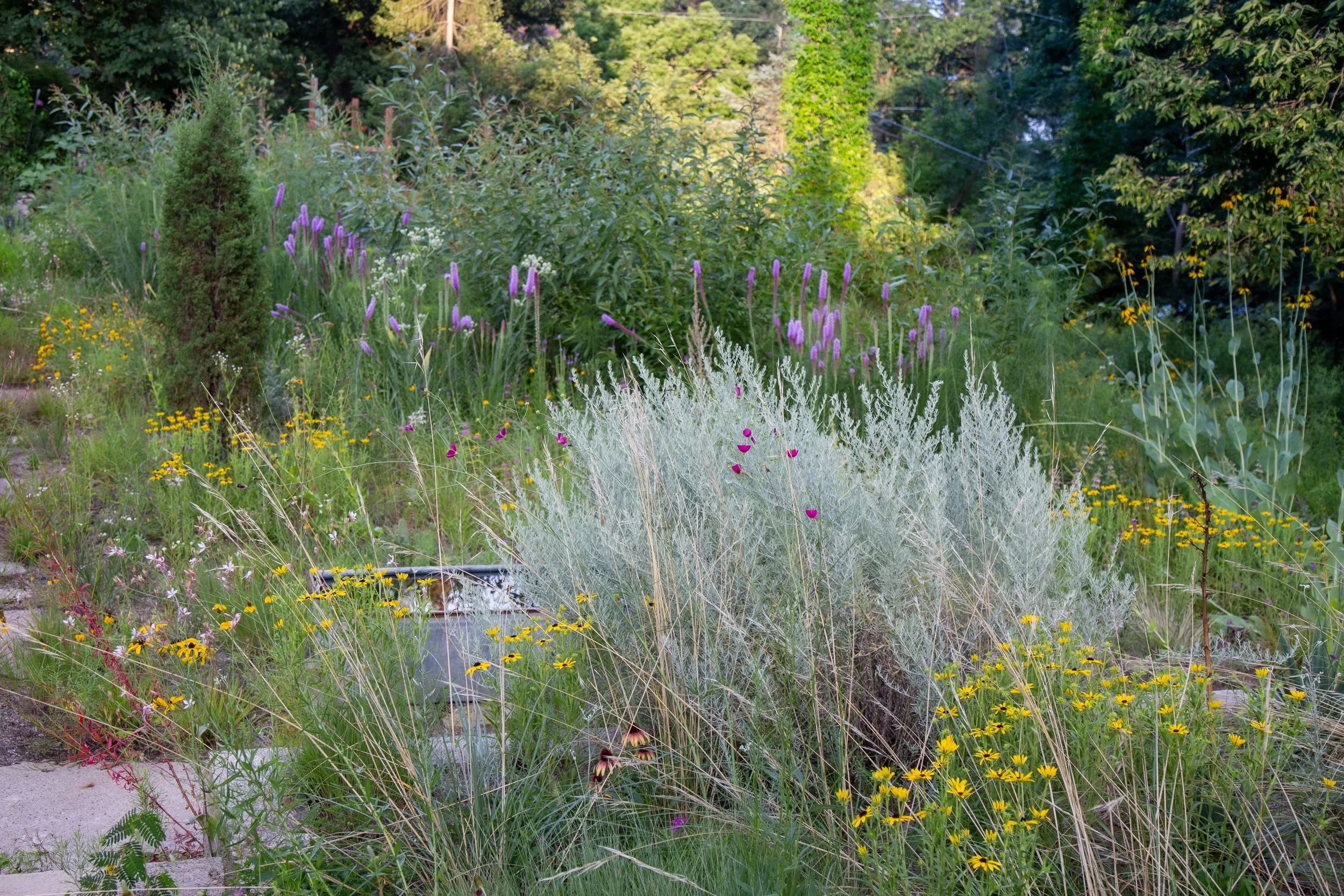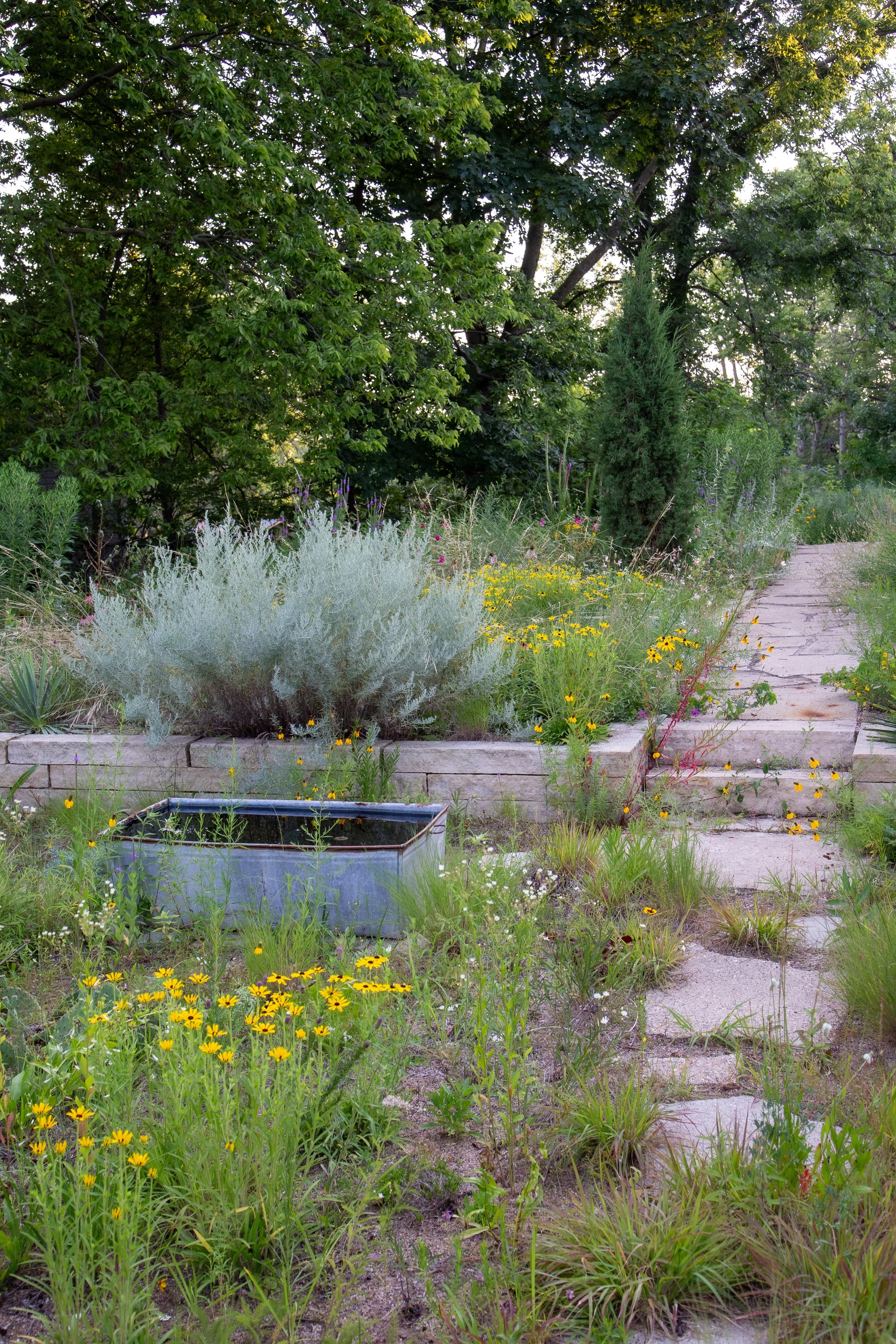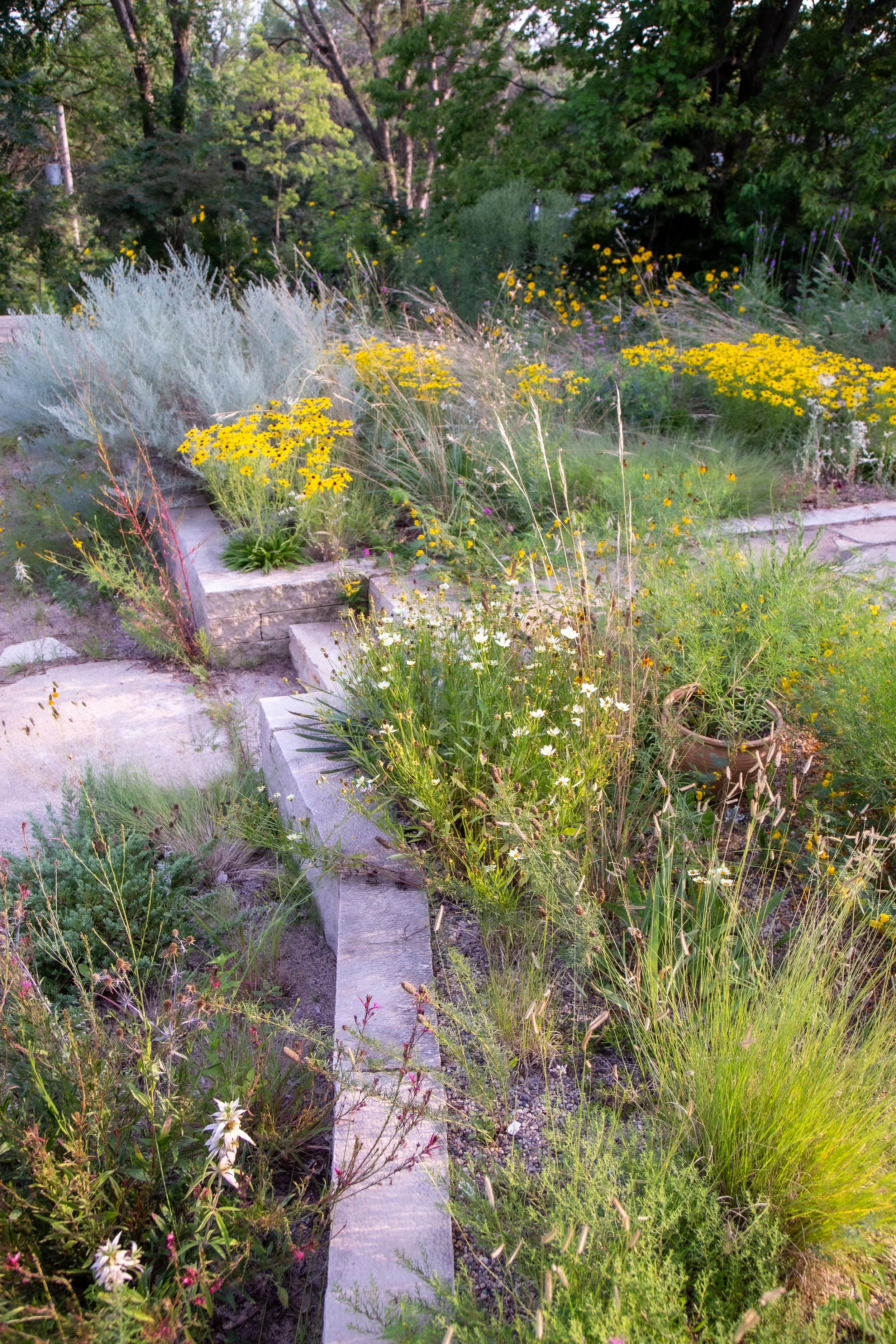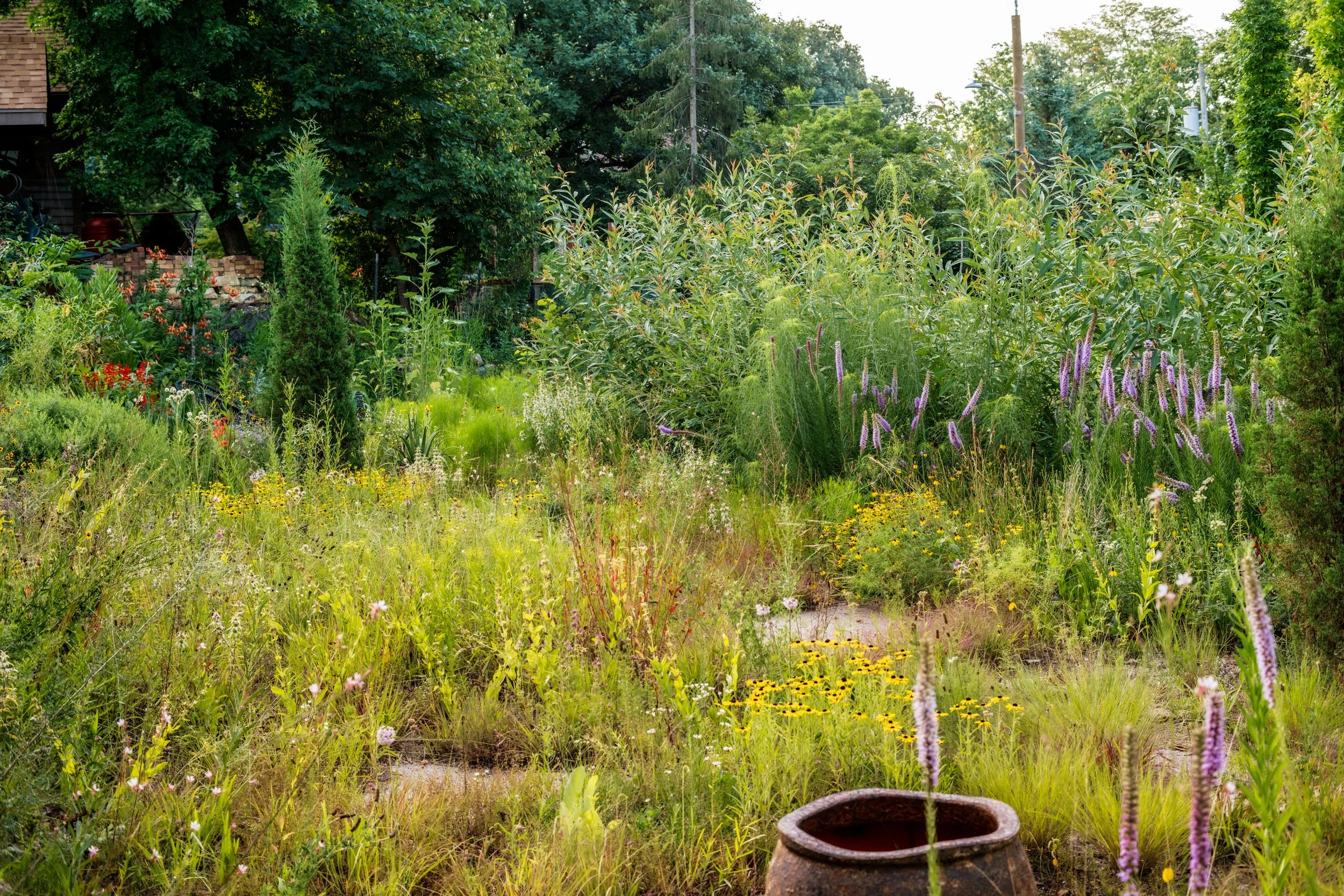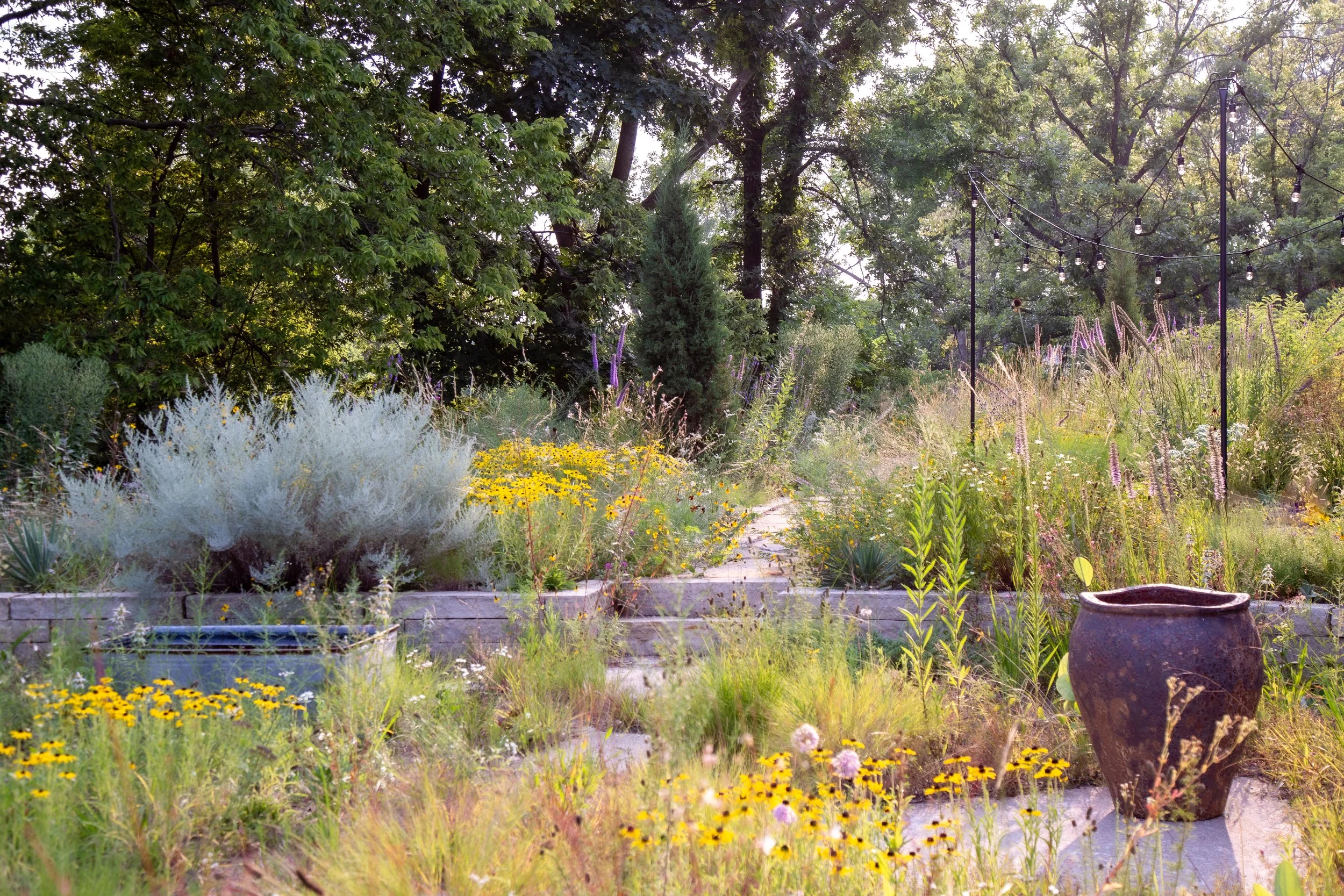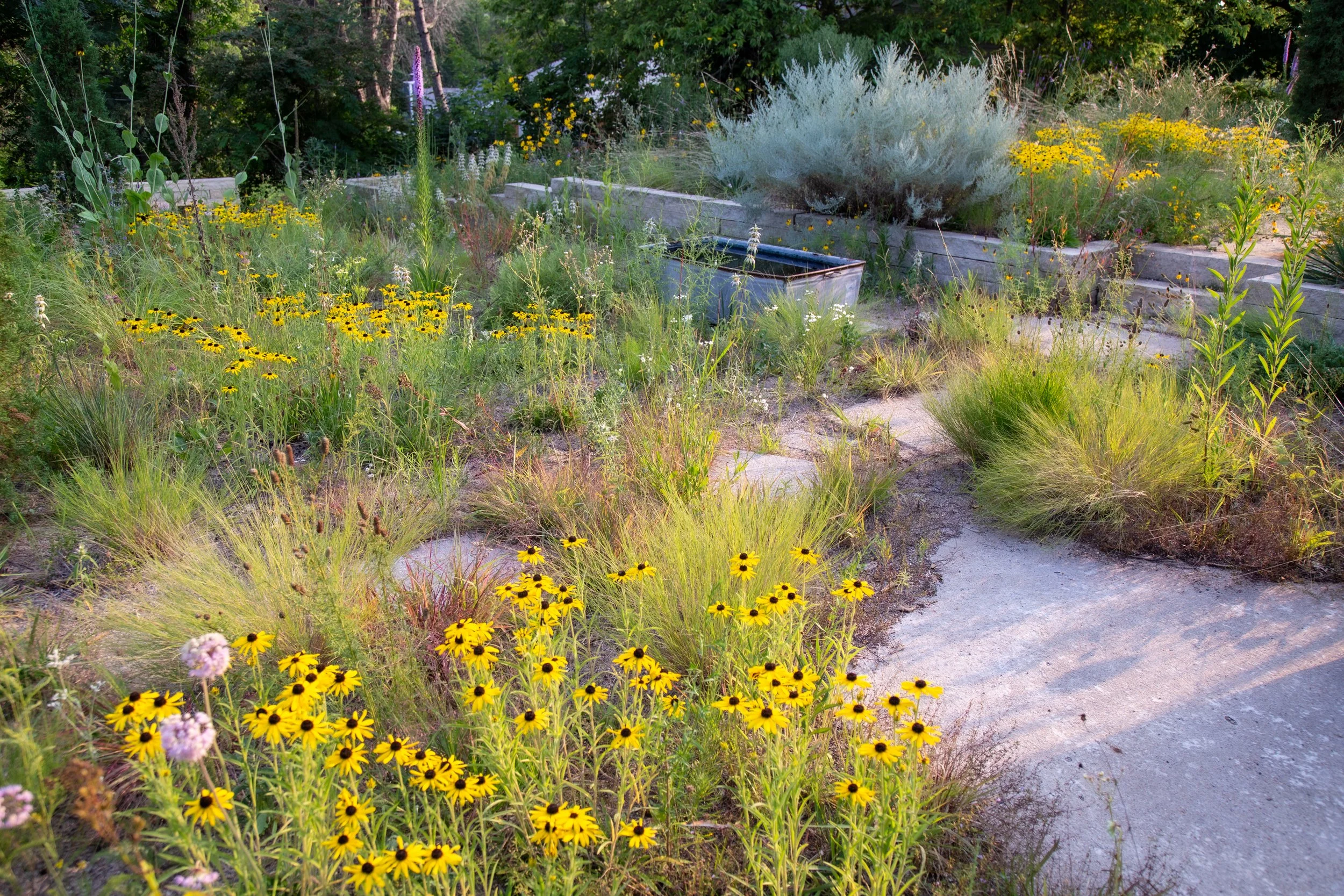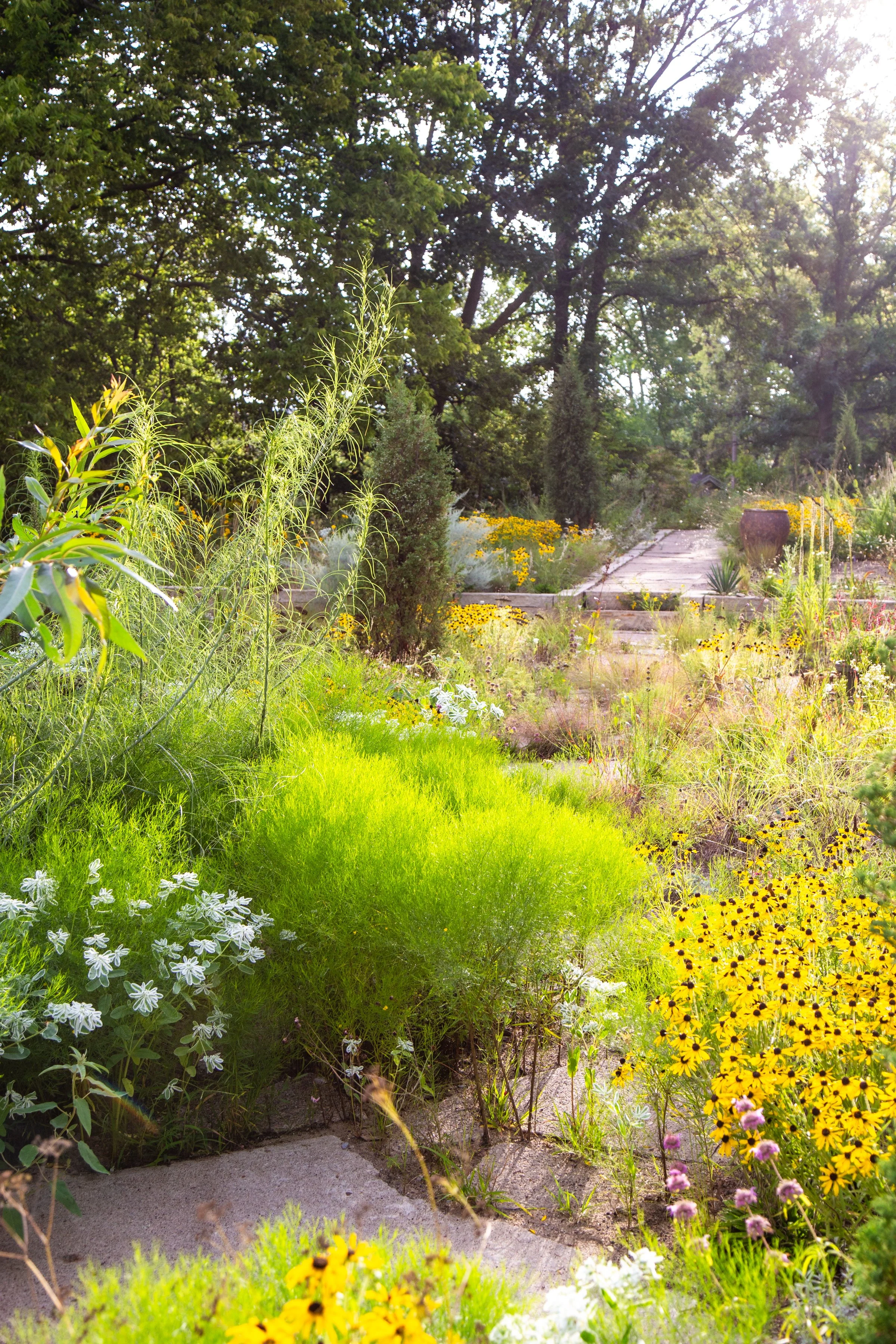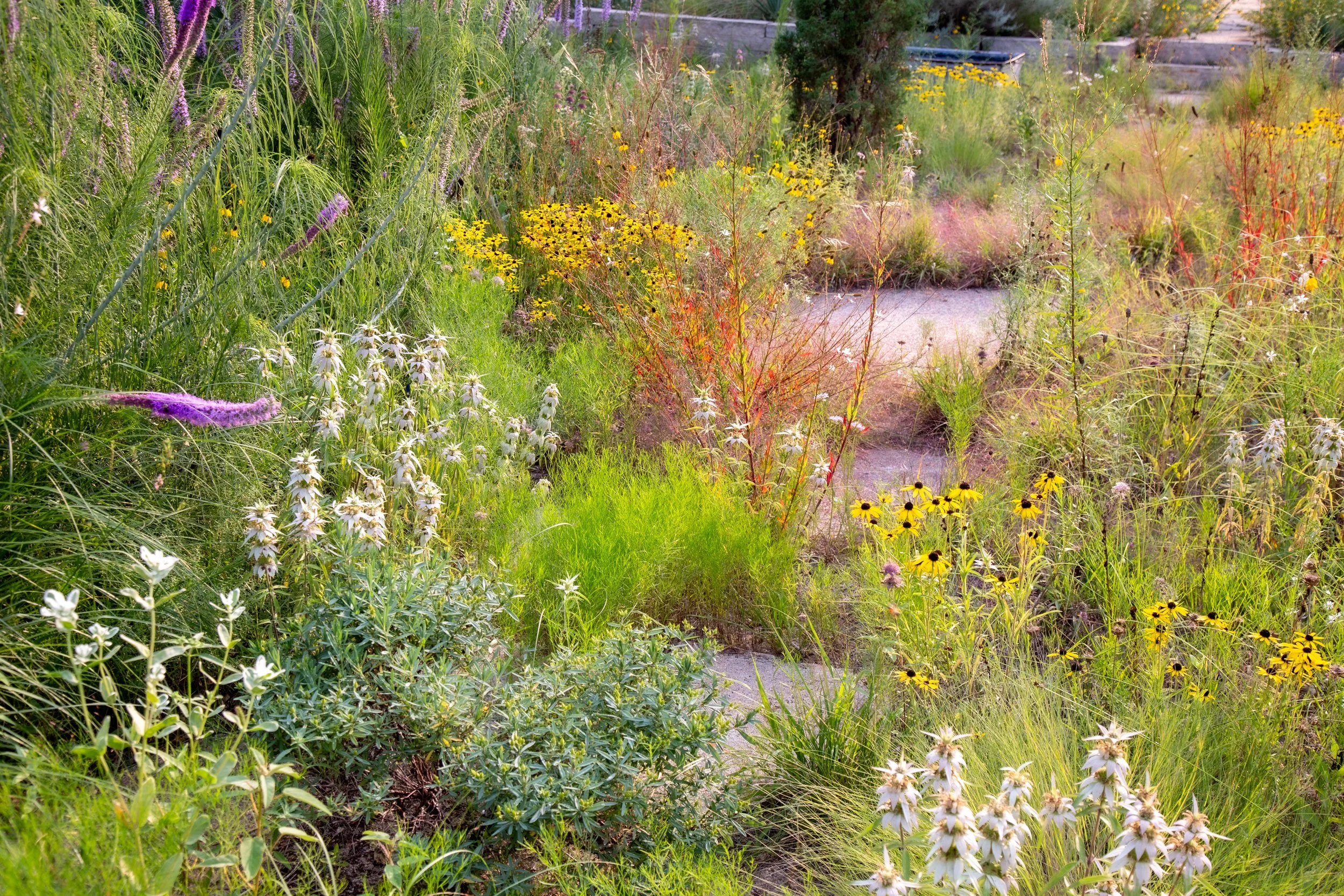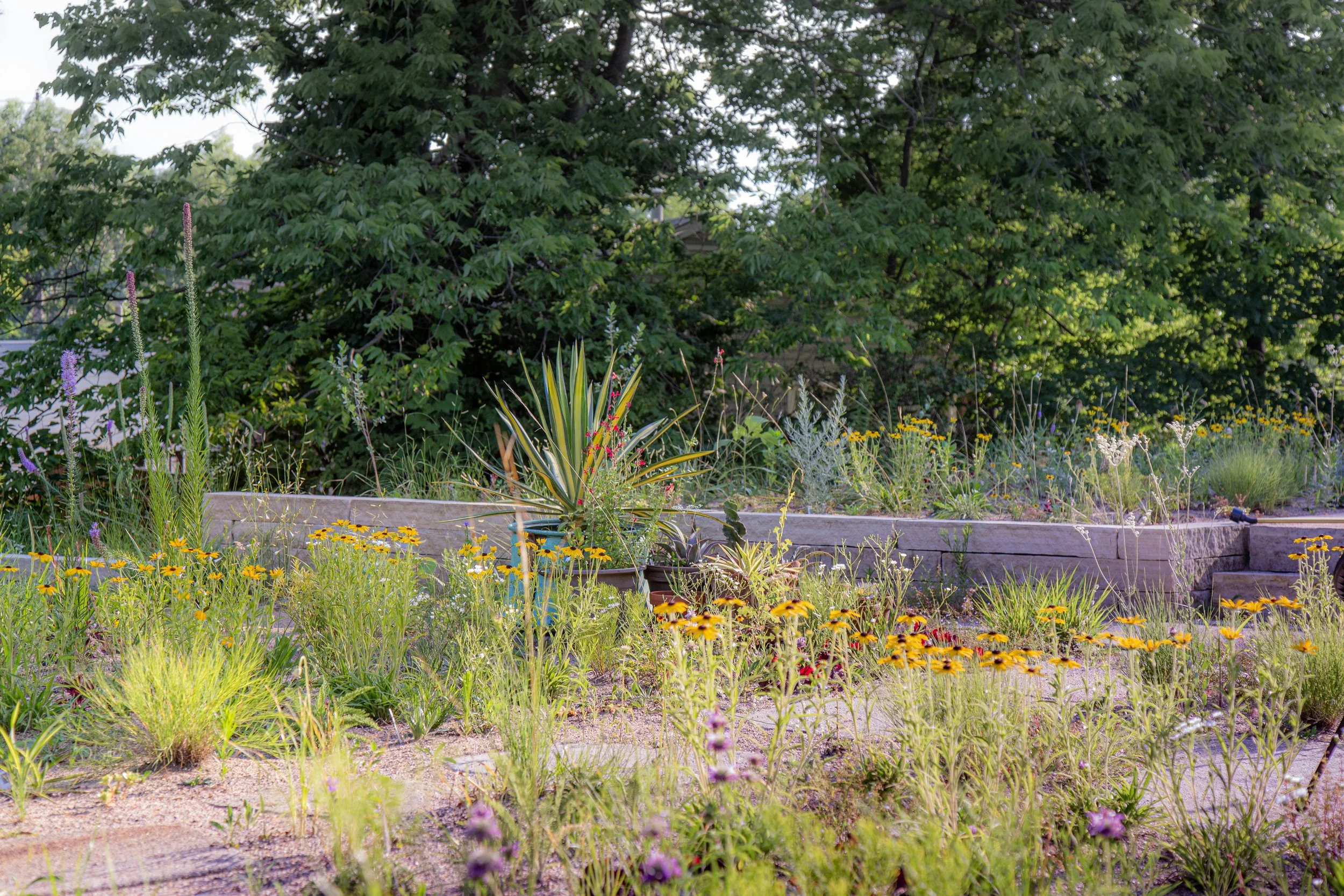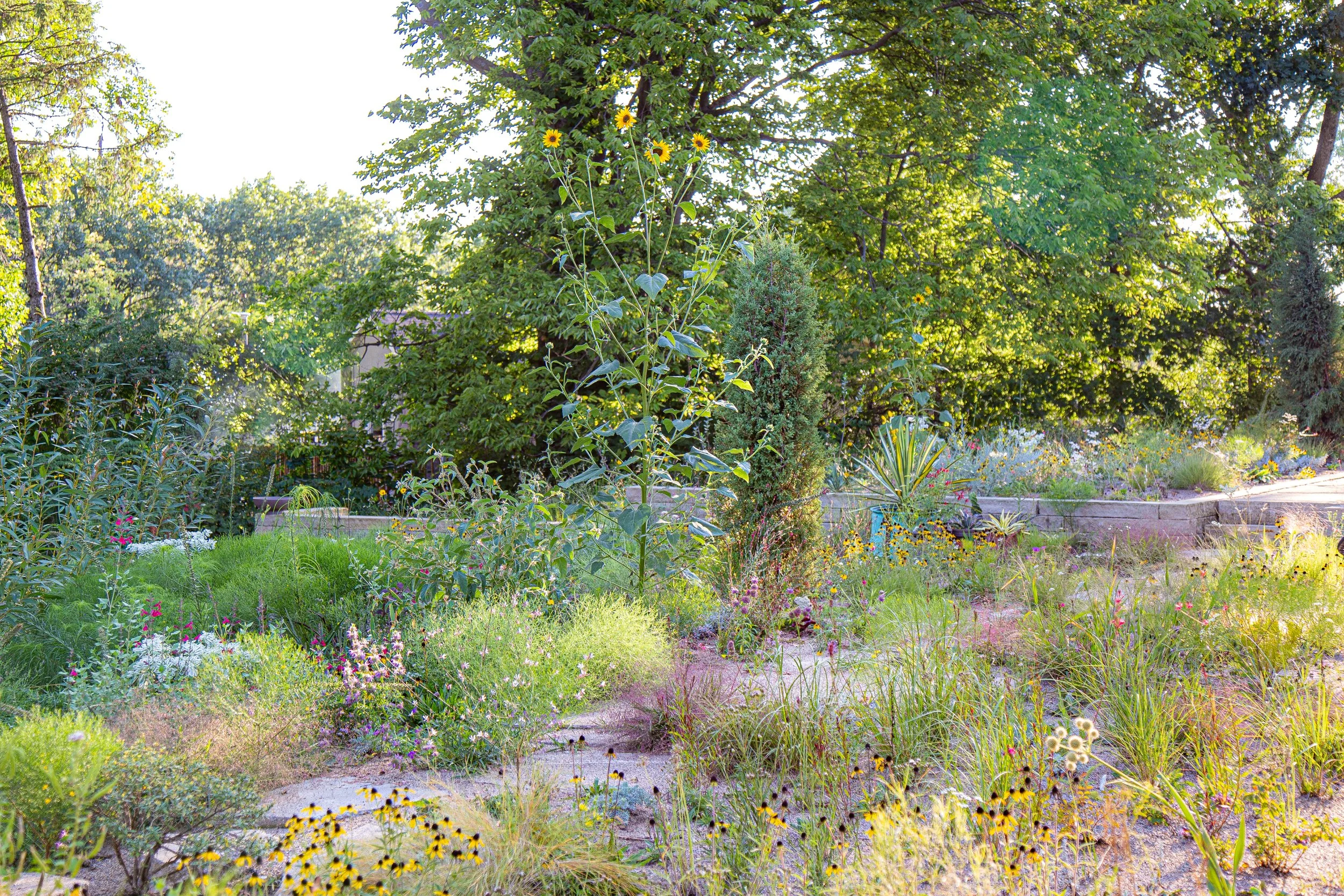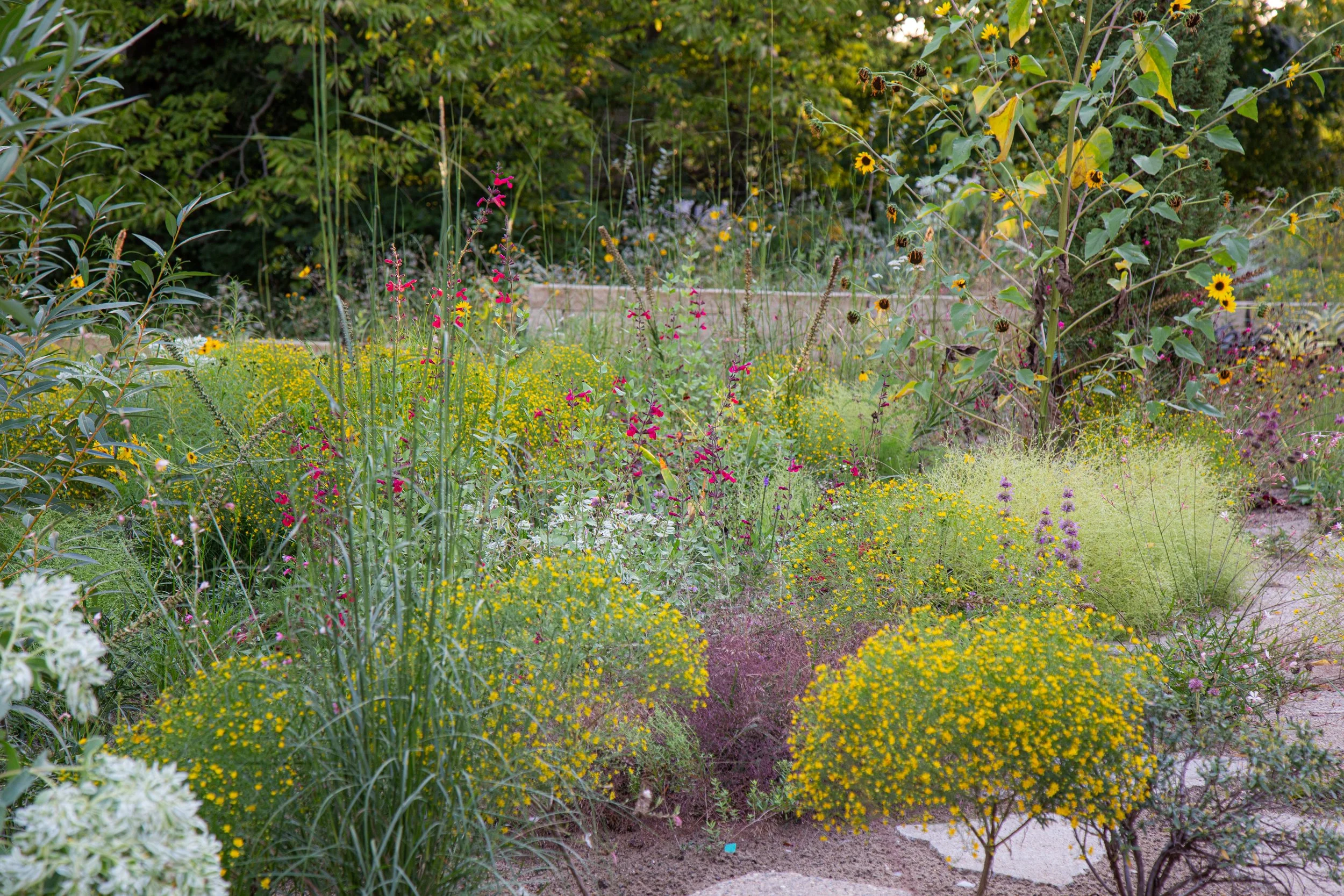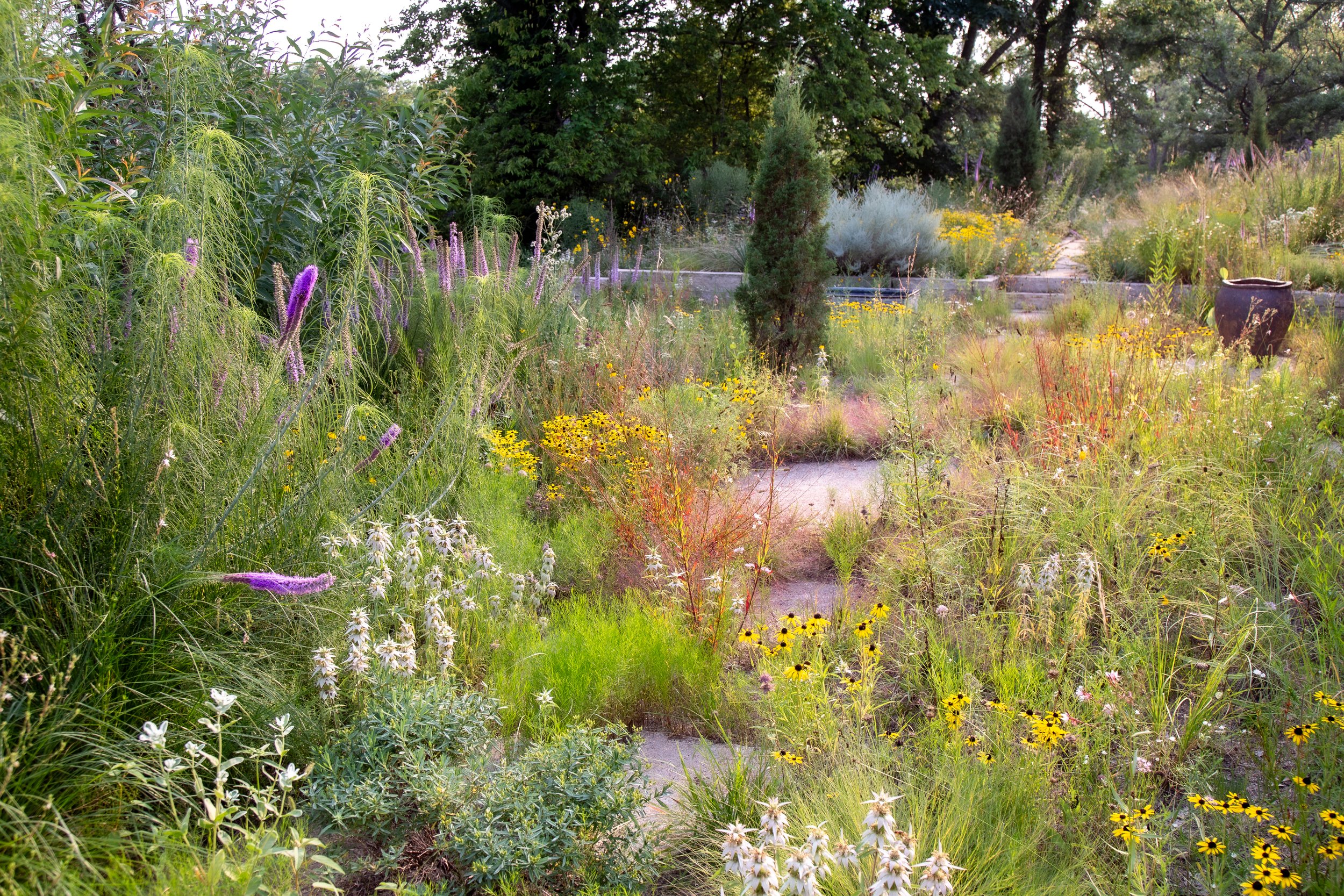
The Romp
The Romp at Three Oaks is an unconventional, community-driven planting scheme in sand. Within the space, I explore the edaphic adaptations of plants indigenous to glacial outwash, sandbars, glades, balds, and even coastal sand dunes (contemporary or historic if you must wonder). It's an exuberant recalibration of place, an importation of sediment and minerals lost to erosion from human use, disturbance, and time. The abundant clay loam is simply what's left of the Hayden series soils of the not-so-distant geologic memory. Adopting this recent history as a contemporary intervention, this garden becomes a tension zone in the grander scheme of the landscape, a moment of stress and leavened fertility that yields profound diversity.
At a glance this chapter of Three Oaks may only seem distantly related to the rest, but the major components associate in an ever-shifting mosaic of vegetation across a generous third of the North American continent (and even on very local scales, sometimes even in the same parcel). As an artist, this nuance is full of creative potential for making gardens that challenge horticultural norms while amplifying ecological value. Even a relatively small or average residential lot (a quarter acre or less) can support myriad habitats, vast plant diversity and essential fauna. My husband David, a observant horticulturist and entomologist, has confirmed the presence of at least 27 superfamilies of wasps in our 0.5-acre garden, seemingly in large part due to the sandy habitat and limestone walls (and the foundation of our home). This local-scale work is only one part of the puzzle, but worth the effort and deeply satisfying. One of the most common reactions I get from clients (in public and private space) is just how "interesting" and "engaging" ecological landscapes are on a near daily basis. You should do more than look at them... you should live in them.
We planted The Romp in 2021 after hardscapes were completed by Young Gardens Iowa (Des Moines, Iowa). The planting is approximately 2,500 square feet in area. We planted 90 species initially and seeded in another three dozen.

